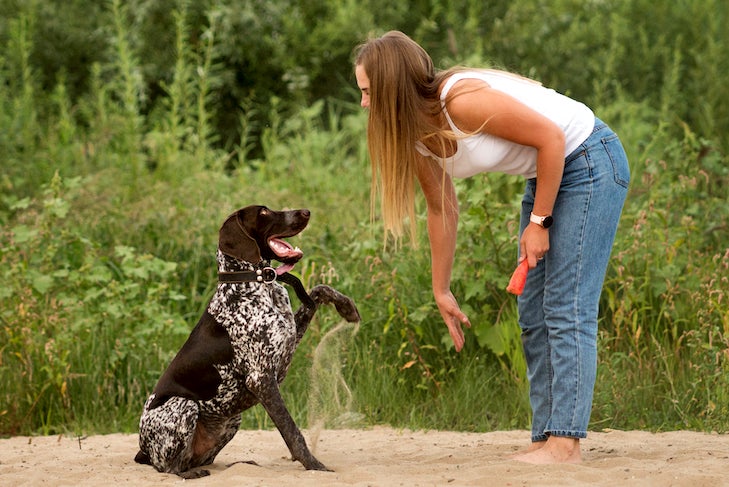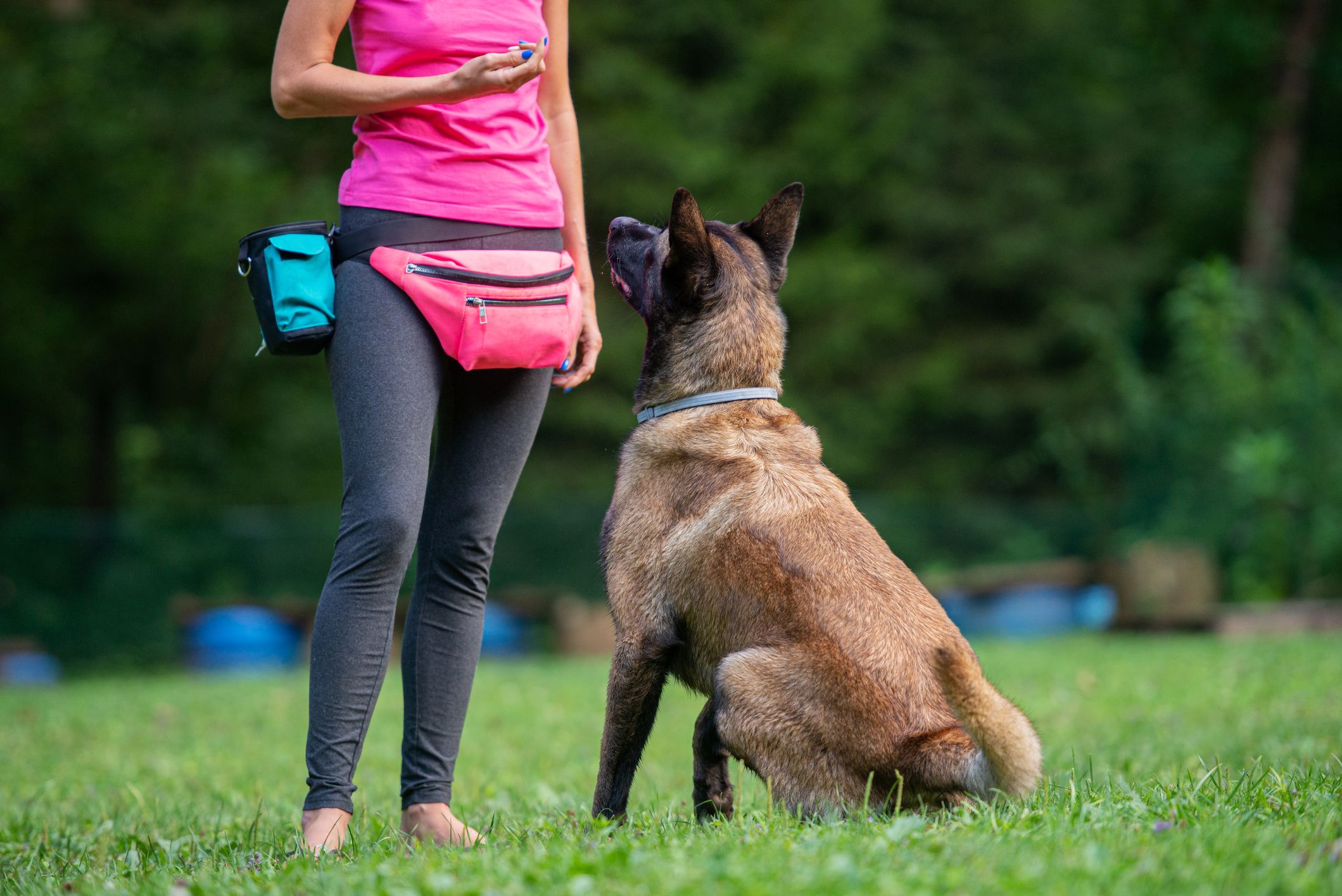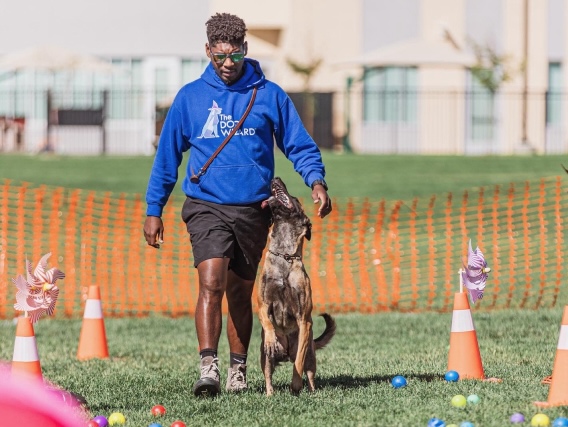Puppy Training That Teaches Key Skills for Lifelong Good Behavior
Top Canine Training Techniques Every Owner Should Know
Amongst the most popular techniques are positive support, remote control training, and leash training, each offering unique advantages that add to a well-behaved dog. As we check out these essential methods, it ends up being evident that understanding their subtleties can substantially impact the training experience and the canine's total actions.
Favorable Reinforcement Methods
Using favorable support strategies is vital for efficient canine training, as it cultivates a relying on bond in between the canine and the trainer. This approach concentrates on gratifying preferable habits instead of penalizing unfavorable ones, producing an atmosphere for finding out. Benefits can consist of treats, appreciation, or playtime, which encourage pet dogs to repeat the behaviors that gain them these rewards.
Favorable support is rooted in the principles of operant conditioning, where habits is affected by its repercussions. By consistently fulfilling particular activities, trainers can shape a dog's behavior gradually. As an example, a pet that rests on command and receives a reward is a lot more likely to repeat that behavior in the future.
In addition, this strategy improves the dog's enthusiasm for training sessions. When dogs associate training with positive experiences, they are much more engaged and responsive. Beyond instant therapy, positive reinforcement motivates a joint relationship between the pet and fitness instructor, minimizing stress and anxiety and anxiety.
To take full advantage of effectiveness, it is vital to deliver rewards promptly, making sure the pet connects the actions with the reinforcement. Essentially, positive reinforcement techniques not only produce better-trained pet dogs but additionally advertise a harmonious collaboration between canine and proprietor.
Clicker Training Method
The clicker training method is a highly efficient technique that builds on the concepts of positive support by adding an unique sound to mark preferred behaviors. This technique makes use of a tiny portable device that generates a clicking audio, enabling instructors to interact with their dogs in a clear and instant fashion. When a canine executes an actions that the owner desires to urge, the clicker is activated, complied with by a benefit, typically in the type of deals with or appreciation.
The key to effective clicker training depends on uniformity and timing. It is vital to click at the specific minute the desired actions takes place, guaranteeing that the canine connects the sound with the activity and the subsequent reward. This approach not only improves interaction however likewise cultivates a stronger bond between the owner and the pet dog, as it encourages engagement and communication throughout training sessions.
Remote control training can be put on a range of behaviors and commands, from fundamental obedience to much more complex methods. Its adaptability and efficiency make it a preferred strategy amongst professional trainers and animal owners alike, leading the way for a well-trained and responsive canine buddy.

Chain Training Essentials
Efficient leash training is crucial for guaranteeing a secure and satisfying walking experience for both dogs and their proprietors. A level collar might function for some dogs, while others might benefit from a harness that decreases drawing.
Present your pet dog to the leash progressively, allowing them to explore it in a comfy environment. Practice loose-leash walking once they are accustomed. This involves fulfilling your dog for strolling next to you as opposed to drawing in advance. Use treats and praise to strengthen preferred actions, and make certain to stay assertive and calm.
If your dog begins to pull, quit walking right away. Wait up until they return to your side before returning to. This shows them that pulling does not result in proceed. Furthermore, technique various strolling settings to help your pet dog adjust to diversions.
Routine technique will certainly strengthen your pet's understanding of chain etiquette. Bear in mind that chain training is a continuous process; persistence and consistency will generate the most effective outcomes, promoting a favorable experience for both you and your canine buddy.
Socializing Methods
Socializing is a vital aspect of pet training that ought to ideally begin during puppyhood but can be helpful at any kind of age. Effective socializing aids dogs create confidence and reduces the possibility of behavioral issues. To implement effective socialization techniques, subject your canine to a range of atmospheres, people, and other pets.

Beginning with regulated setups, such as pup classes or arranged playgroups, where young pet dogs can interact securely. Slowly introduce your dog to new experiences, including various noises, surface areas, and tasks. Make certain these encounters are favorable and satisfying to develop a sense of protection.
For adult pet dogs or those lacking direct exposure, begin with Read Full Article low-stress circumstances. Short, favorable interactions with pleasant humans and calm canines can develop positive associations - Dog training. Use deals with and praise to strengthen preferable actions during these experiences
Monitoring your canine's body language is important; indications of anxiety or aggressiveness ought to be addressed promptly, either by getting rid of the pet from the situation or rerouting its emphasis. Continually exposing your dog to diverse stimulations will certainly foster adaptability, making it an all-round friend capable of thriving in various settings.
Consistency and Patience
Identifying the importance of consistency and patience in dog training is necessary for attaining lasting results. Training a dog is a gradual process that calls for an organized approach and unwavering commitment from the owner. Each command or behavior have to be reinforced regularly to help the canine understand what is expected of them. Inconsistent training can result in confusion, making it difficult for the dog to comprehend commands or habits, inevitably hindering progression.
Additionally, patience is a vital element of efficient training. Dogs, like human beings, discover at their very own rate. Some might comprehend ideas rapidly, while others might take much longer. It is essential for owners to continue to be helpful and tranquil, reinforcing favorable behavior without considering disappointment or penalty. This cultivates a relying on relationship between the dog and owner, motivating an extra enthusiastic and eager student.
To cultivate consistency and patience, establish a regular training routine, make use of the very same commands, and make sure that all relative use the same training concepts - Dog training. By doing so, you produce a secure setting conducive to try this out discovering, enabling your pet to establish and grow right into a well-behaved buddy

Final Thought
Finally, efficient pet training methods, such as positive reinforcement, clicker training, and correct chain training, are important for fostering a healthy owner-dog connection. Furthermore, carrying out socialization techniques and maintaining consistency and persistence throughout the training process contributes significantly to a dog's overall well-being. By integrating these methods, canine proprietors can facilitate the advancement of well-adjusted, obedient family pets, inevitably boosting the lifestyle for both the pet and the proprietor.
Among the most popular methods are favorable reinforcement, remote control training, and leash training, each offering special advantages that contribute to a mannerly pet dog. As we check out these basic approaches, it becomes obvious that grasping their subtleties can significantly impact the training experience and the pet dog's total behavior.Utilizing favorable reinforcement methods is necessary for effective pet dog training, as it cultivates a trusting bond in between the dog and the fitness instructor.In verdict, effective canine training strategies, such as positive reinforcement, remote hop over to these guys control training, and correct leash training, are necessary for fostering a healthy owner-dog partnership. By integrating these approaches, pet owners can facilitate the advancement of well-adjusted, loyal family pets, inevitably improving the quality of life for both the proprietor and the pet.